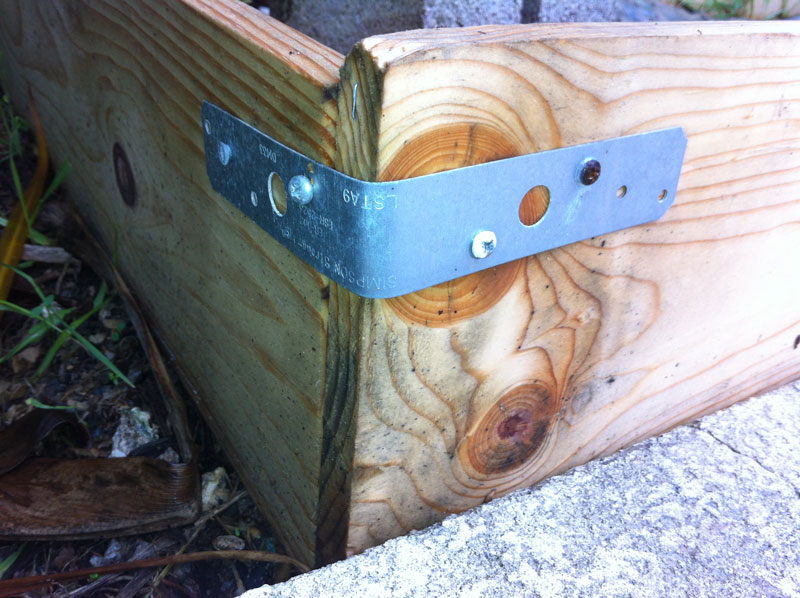Most of the country is winding its gardening down and focusing instead on the new school year and autumn preparations — composting those old annuals, collecting seeds, digging it all under to go fallow.
However, our extreme southern gardening is really just beginning. Now, finally, we can grow some fruit and vegetables without the fear of them frying to a crisp under the summer sun or rotting in our tropical summer downpours.
I have very limited space to grow many of the plants associated with edible gardening, for example tomatoes, which can grow pretty large. But there is always a way.
I began by clearing a small area in my tangled jungle of a yard by transplanting some bromeliads and pulling weeds to reveal a compact and manageable area 2 1/2 feet deep by 8 feet wide. The area gets almost a full day’s exposure to sunlight (it should get at least six hours).
It’s important to cultivate the soil in a typical South Florida yard, where much of it may be compacted and consist of rocks and construction landfill. Using a three-tined hand cultivator, I worked out as many large rocks as possible while loosening and aerating any compacted areas. I had been adding compost, as well as pine shavings and natural fertilizer thanks to our pet rabbit — he’s been a prolific provider — all summer, so the area’s soil is a little richer than normal for South Florida backyards. (If you haven’t been composting, you can purchase what you need.) Even so, the nutrient-rich layer is not very deep, and the area is prone to flooding, so I constructed a raised rectangular bed from lumber.
 |
| One of the many ways to construct your raised bed. |
It’s exquisitely simple. I purchased two precut 2 inches by 8 inches by 8 feet pieces of untreated wood and cut another board into two 2 inches by 8 inches by 2 1/2 feet. (Do not use pressure-treated or insect-resistant wood. It’s chemically treated.)
In the garden, I positioned the boards, and using bendable mending plates (i.e. metal straps) and screws, connected each corner. That’s all it is! You can even directly screw the wood ends together, or hold the wood in place with steel rebar hammered into the ground, or with cinder blocks. You can use just about anything with sides and an open bottom as a raised bed: recycled plastic lumber; cinder blocks; bricks; hay bales; old tires. I’ve seen cinder blocks used quite artfully for raised beds, with the open spaces within the blocks planted with flowers.
 |
| A raised bed at Fairchild's Edible Garden |
What to plant? I am no expert gardener. I need a plant that promises a fair chance of yielding something I can eat. I tend to be overly optimistic after drinking strong coffee. So after a large mug I bought tomatoes online. Not seedlings for transplant, but heirloom “Cherokee purple” tomato seeds.
This variety is considered “indeterminate,” meaning it’ll grow — big. Determinate varieties on the other hand are bred to stay compact, set all fruit at about the same time, and thereafter
die. The hearsay, however, is that the smaller, determinate varieties aren’t as flavorful. And indeterminate, though requiring a support as they grow six to 10 feet tall, set fruit throughout the season.
It’s hard to pin down when to plant tomatoes in South Florida. The packaging always states “plant after the last frost.” Ha! That’s funny. The key is planting after the intense heat of summer and after the risk of a torrential downpour that might destroy young plants. The general consensus seems to be mid to late October is safe for tomatoes.
If you’re planting seeds, grow them for five to six weeks before planting in the raised bed. They need to be hardened to full sun before planting. Start with an hour of full sun exposure and increase each day for a week. Keep a close eye on them to make sure they aren’t wilting. Or just buy seedlings — instant garden! Since some tomato varieties may need 80 days or more to set fruit, plant by December so they can thrive before the hot weather of spring returns.
But this is about starting your garden, not just growing tomatoes. So start by building a raised bed now. A good trick is to cover the soil with layers of newspaper to keep down weeds until you are ready to fill the bed with garden soil, compost and whatever you decide to grow.
To learn more about not only how to grow, but what to grow this fall, the University of Florida’s “Florida Vegetable Gardening Guide” is an understandable yet detailed resource written specifically for Florida gardening. It includes lists of plants and the ideal time to plant them, days until harvest, irrigation, fertilizing, pest control and other tips. View it at http://edis.ifas.ufl.edu/vh021.
Kenneth Setzer is writer and editor at Fairchild Tropical Botanic Garden.
